All The Rules You Didn't Realize Women's College Basketball Players Have To Follow

- Oops!Something went wrong.Please try again later.
- Oops!Something went wrong.Please try again later.
- Oops!Something went wrong.Please try again later.
- Oops!Something went wrong.Please try again later.
"Hearst Magazines and Yahoo may earn commission or revenue on some items through these links."
Every spring, March Madness sweeps the nation, as sports fans watch to see which college basketball program will dominate the competition and be crowned the national champion. (After all, those brackets are serious business.)
Sixty-eight teams enter the single-elimination tournament, which typically starts in mid-March and ends by the beginning of April. This year, all eyes are on the women's games, thanks to superstar players like Iowa's Caitlin Clark—who recently became the all-time NCAA scoring leader for both men's and women's basketball—and Angel Reese, who has racked up accolades, championship wins, and life-changing brand deals during her time with Louisiana State.
While these women's accomplishments are mind-boggling on their own (remember, they're students too), it's even more impressive when you consider all of the rules players must follow to keep their spot on the team.
From in-game conduct regulations to uniform mandates and academic standards, here are the rules you might not know women's NCAA basketball players follow.
Fighting leads to an automatic ejection.
We get it—tensions can run high during an intense game. Despite this, players must keep their cool on the court. After all, fighting results in an automatic ejection from the game and can completely throw off the game's momentum. During the 2024 SEC Championship game, players from LSU and South Carolina got into a brawl that ended up delaying the game for 20 minutes while officials decided who to eject.
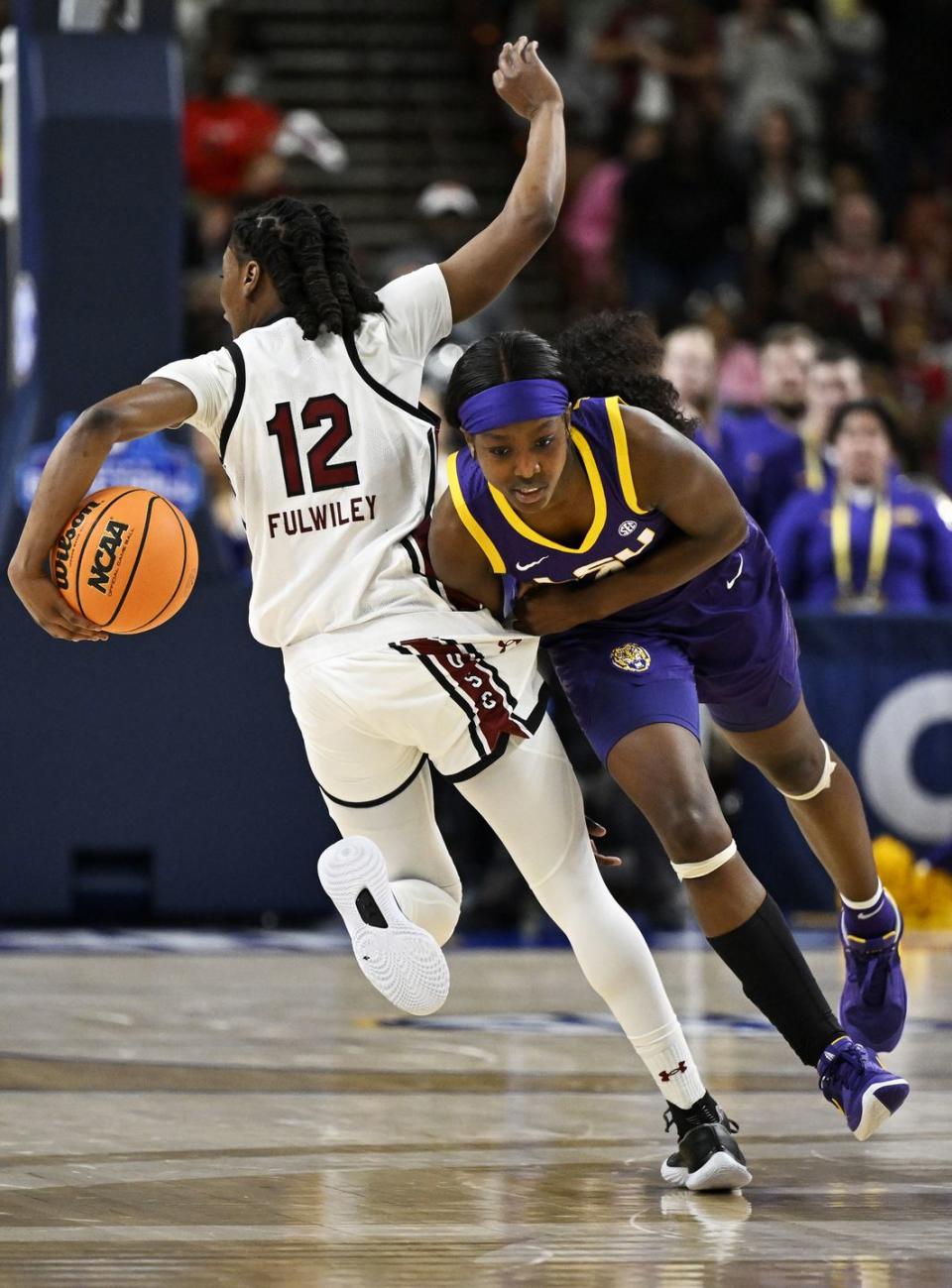
And players on the bench can't get involved either.
When athletes are taking a breather on the sidelines, they, too, can be penalized for getting too rowdy. Case in point: During the 2024 SEC Championship, several South Carolina players got involved in an altercation on the court. Because NCAA rules state that players cannot leave the bench, they were all ejected from the game and weren't allowed on the court to celebrate their team's tournament win. The one exception for joining teammates on the court? Celebrating an amazing play.
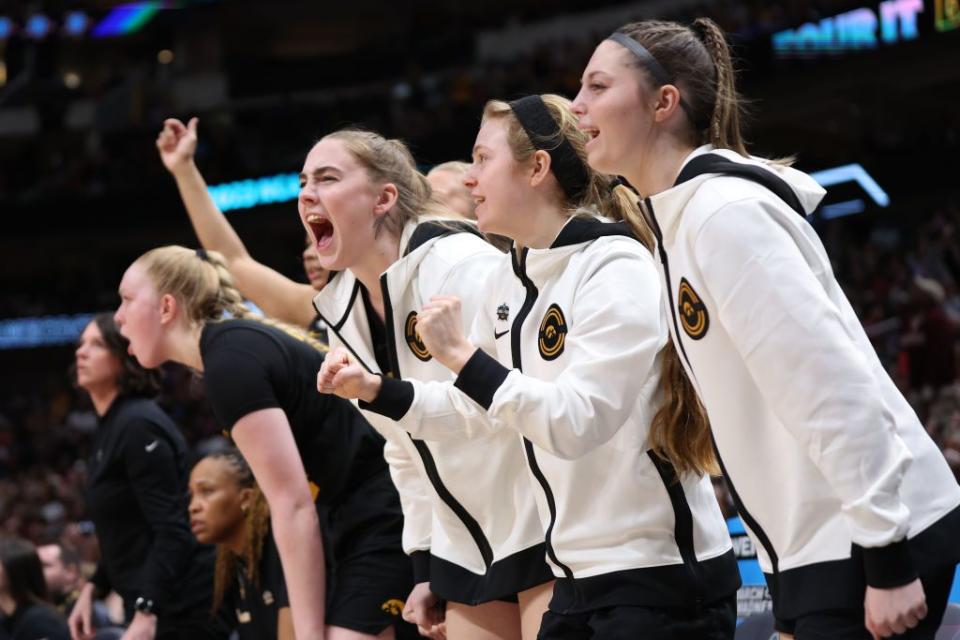
Fouls could lead to an automatic ejection.
The women's game features "unsportsmanlike" and "disqualifying" fouls. An unsportsmanlike foul is called when there is either "excessive or severe contact," or when a player commits a technical foul during a dead ball. These result in two free throws for the opposing team. Things get a little more serious during a disqualifying foul, which are called when the official deems the foul to be an "even more severe infraction." Should a player commit a disqualifying foul, she is ejected from the game.
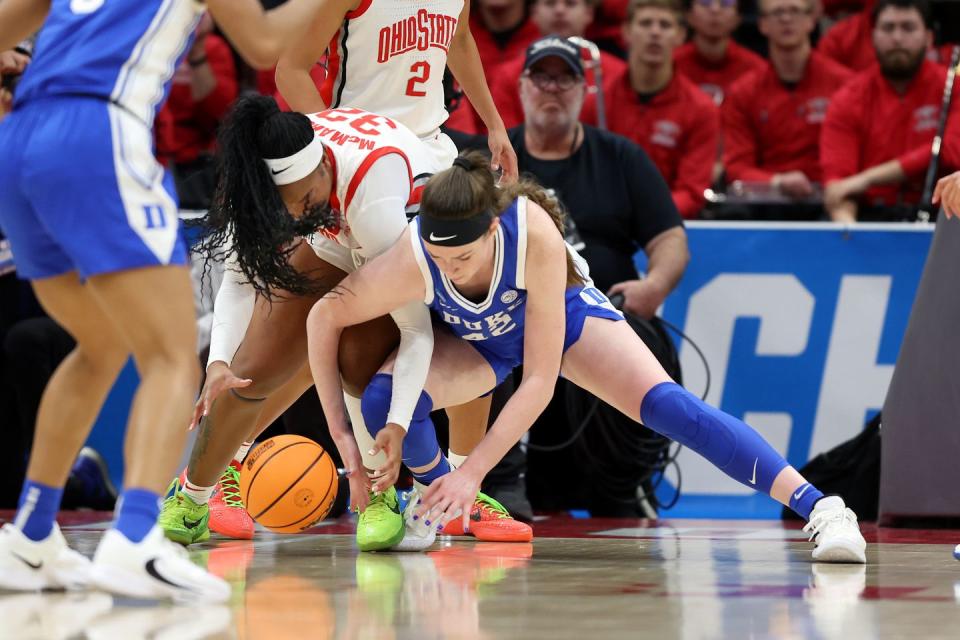
Flopping can hurt the whole team.
A player accused of "flopping," or falling to the ground after little to no contact from an opposing player in order to draw a personal foul call, will now end up hurting their entire team. Per a new rule, after a player is given their first flop warning, any subsequent infractions will add to the team's total foul count. Let's all agree to keep the game flop-free, shall we?

Teammates' undershirts must be the same color.
...as seen here, with Ole Miss players sporting navy shirts under their jerseys. There's no rule when it comes to sleeve length, however: Some players choose to go long, while others prefer short sleeves. In fact, an individual player can choose to wear one long sleeve and one short sleeve if they wish.

Dunking is allowed, but it's rare.
Although slam dunks are much more common in the men's game, collegiate women have racked up some pretty impressive dunks! In 1984, West Virginia's Georgeann Wells became the first women's college basketball player to dunk in a game. Meanwhile, Tennessee's Candace Parker became the first woman to dunk in an NCAA Tournament game and Baylor's Brittney Griner currently holds the record for most career dunks in women's college basketball history at 18. The most recent player to dunk was Stanford's Francesa Belbi in 2020.

Players can't wear jewelry.
Although a few sports leagues allow players to accessorize their uniforms with necklaces, earrings, or bracelets, the NCAA rulebook states that jewelry on the court presents a safety concern. Luckily, there are no rules against sporting your finest gems during post-game celebrations!

And their nails can't be too long.
Although college athletes are free to rock whatever nail art they choose, as seen here with LSU star Angel Reese's white polish, NCAA rules prohibit "excessively long fingernails."

Blood must be cleaned up ASAP—or else the player is substituted.
When a national championship is on the line, things can get a little heated on the court and accidents happen. If a player starts bleeding, they have 20 seconds to clean it up, or else they must leave the game until it subsides. Should that blood get on their uniform, it's up to medical personnel to decide if they need to swap it out for a new one.
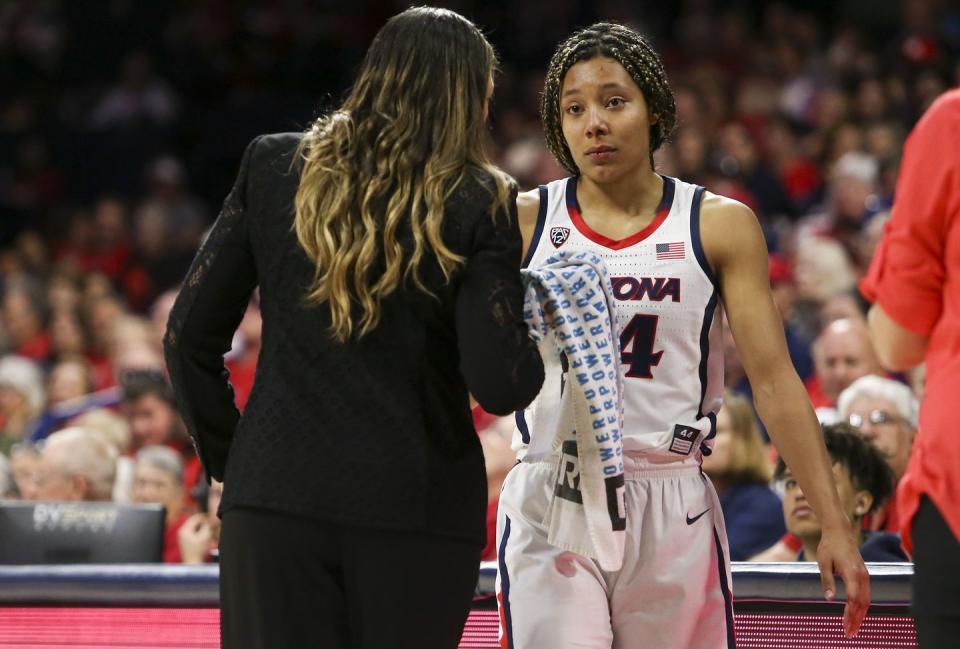
The same rule applies for contact lenses.
Ever had to deal with a pesky contact that just won't stay put? LSU's Angel Reese was spotted popping her contact lens back in her eye during a matchup against Arkansas. If a player can't fix their contacts within 20 seconds, they must come out of the game. (Stanford star Cameron Brink recently underwent a vision correction procedure to avoid this kind of mishap.
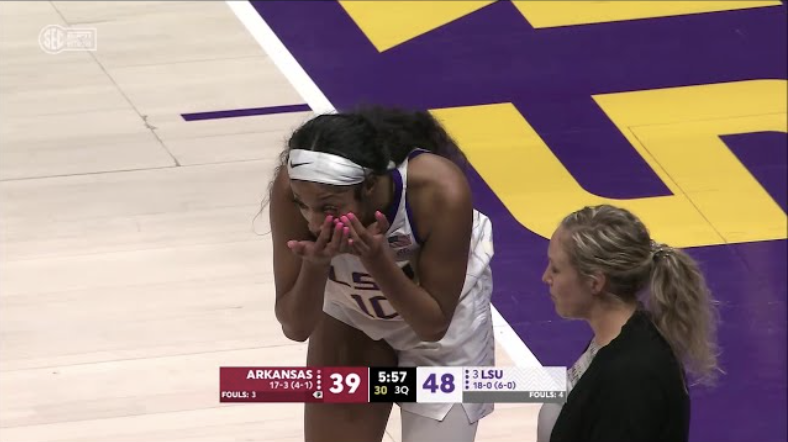
The college athletes can't wear any old headband.
While not all players choose to sport a headband, the ones that do must ensure it follows the NCAA's uniform guidelines. Players are only allowed to wear one headband, which must be a single color. Headwear also must comply with rules regarding logos, thickness, and fabric type.
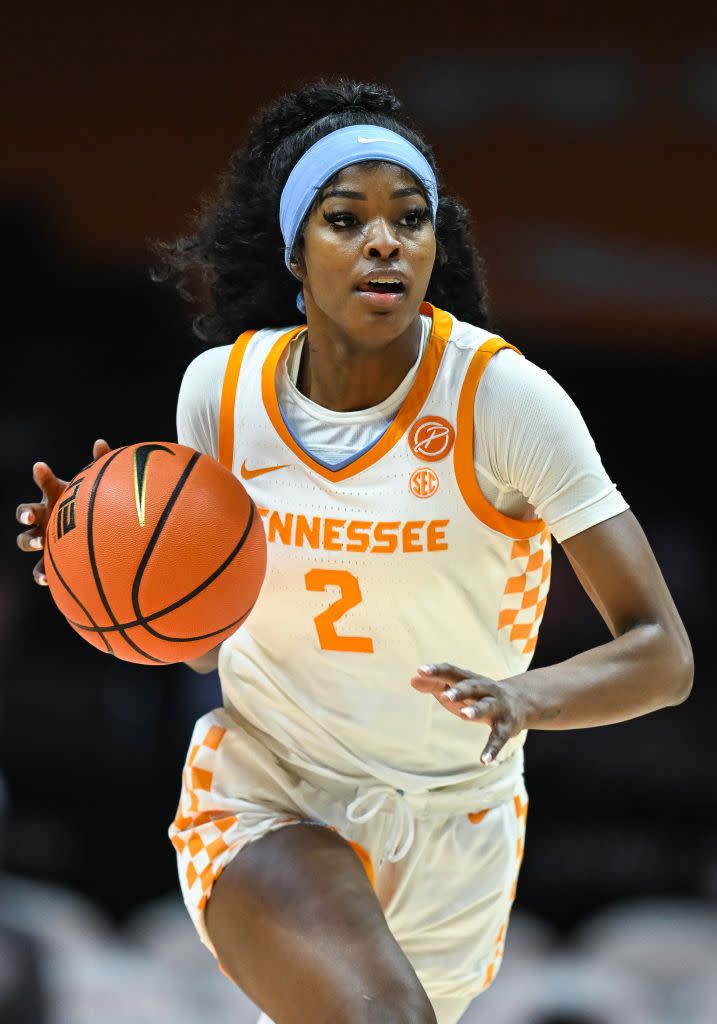
The women's tournament wasn't always called March Madness.
While the men's tournament has gone by the March Madness moniker for decades, the women's tournament didn't get to adopt the name until 2022. The NCAA said their decision was made after a "comprehensive external review of gender equity issues in connection with NCAA championships." The decision notably came on the heels of several controversies surrounding disparities in the treatment of men's and women's teams during the 2021 tournaments.
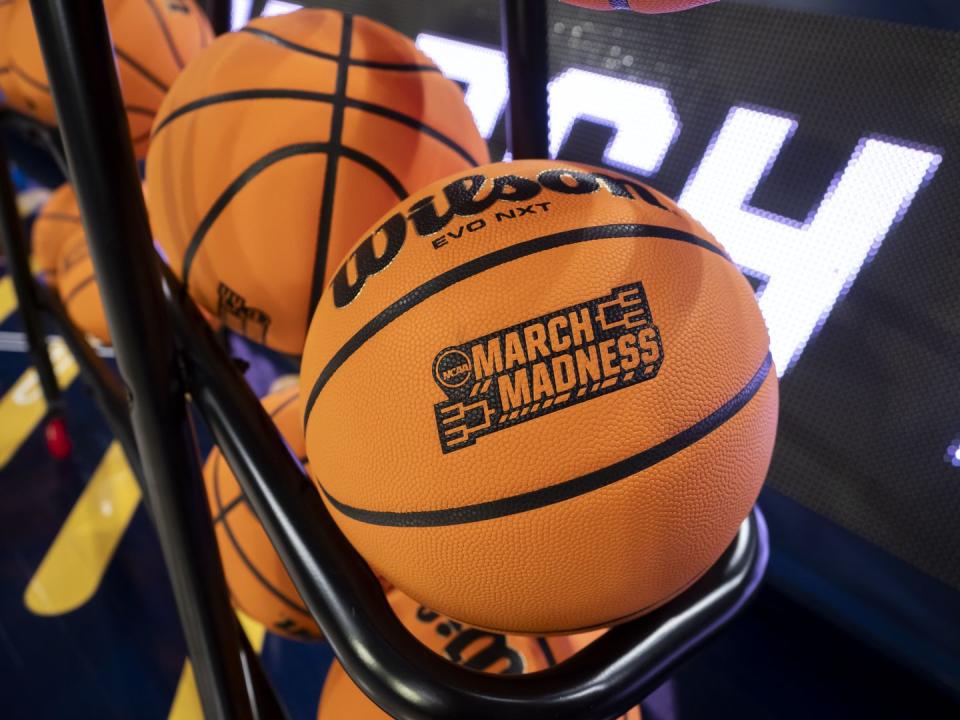
Players have to be careful when rolling their shorts.
Although the NCAA's uniform guidelines don't explicitly prohibit players from rolling the waistbands of their shorts for a better fit, they have to ensure that no manufacturer logos are visible when doing so. "With our shorts down to our knees, we look like boxes," Gonzaga player Zhané Templeton told USA Today in 2017 when asked why she adjusts her shorts. "Especially as a female, when you have shorts and they're all the way down to your knees, it's not that cute."
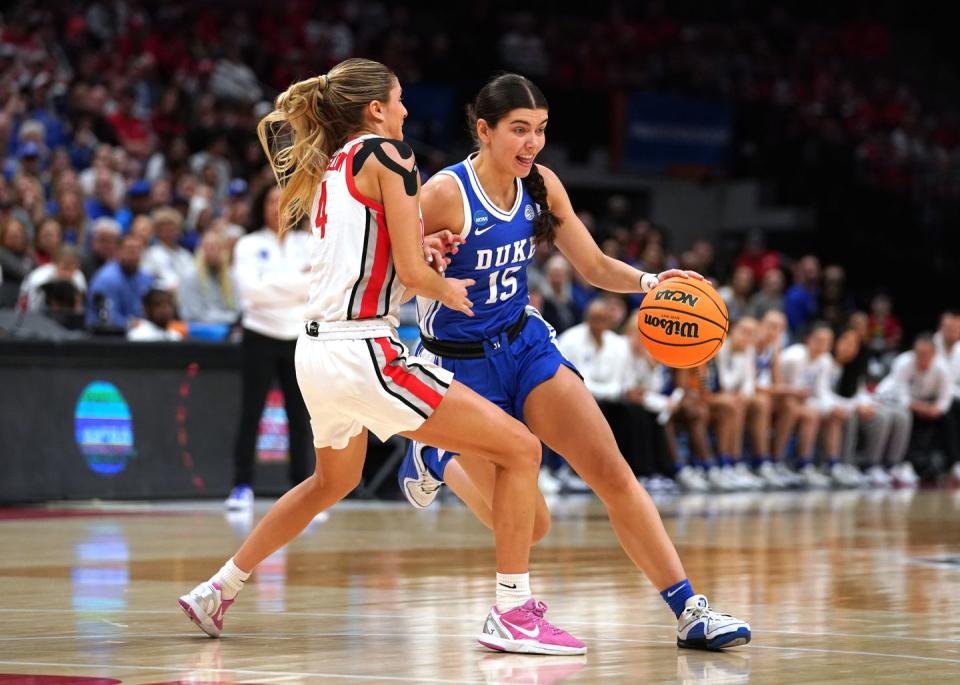
But there's currently no NCAA rule regarding short length.
While some players go for the roll, others have said they prefer tucking the bottom of their shorts into their compression shorts for a tighter fit, as seen here on Alabama's Aaliyah Nye. WNBA player Sophie Cunningham told AZ Central that she's been tucking her shorts since her college days because she dislikes how longer shorts ride up when she sweats.
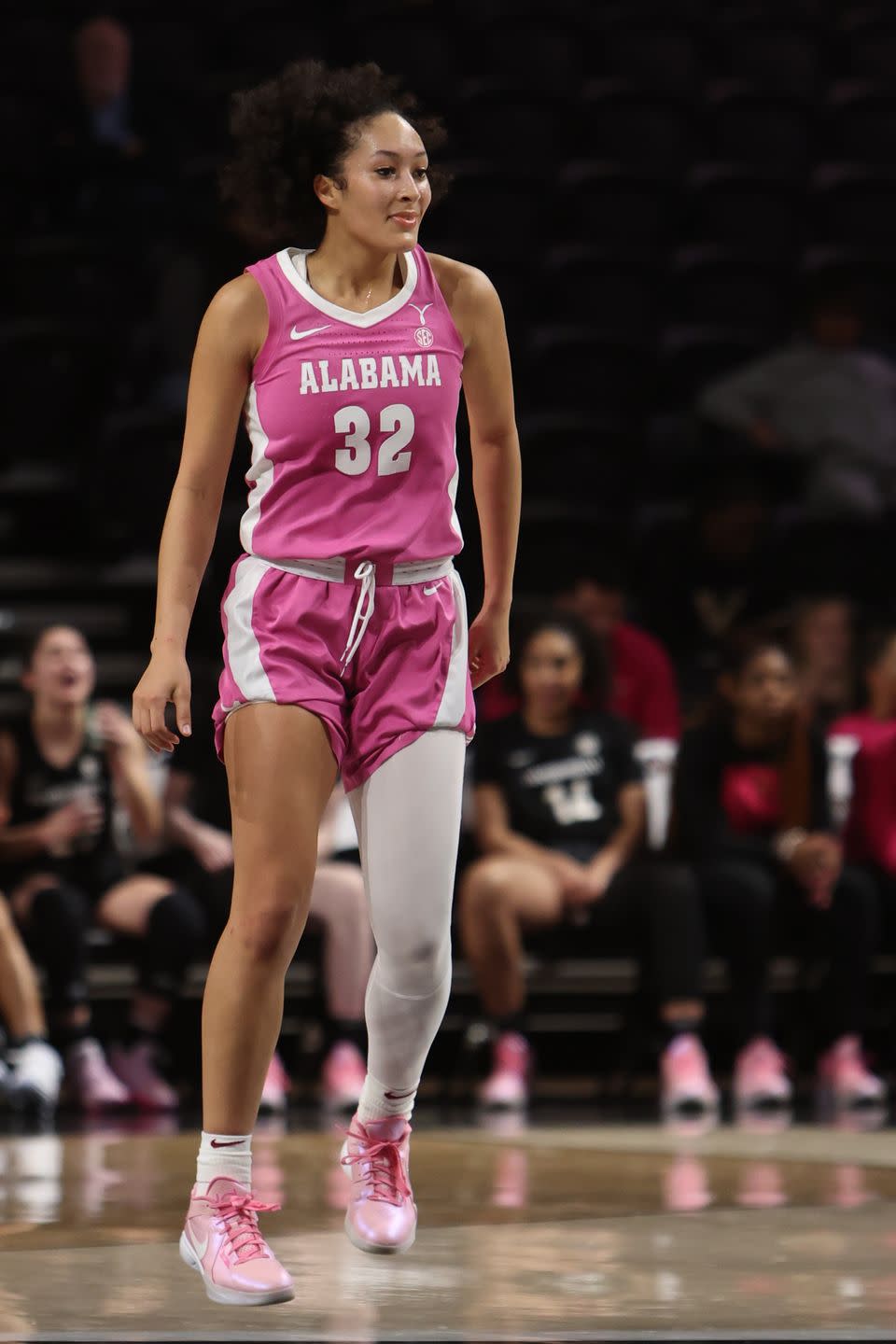
Jerseys must be tucked in at all times.
Although players have some freedom when it comes to their shorts, there isn't any leeway concerning jerseys. Players must keep their jerseys tucked in for a few reasons. Not only does it maintain a uniform look, but the tuck prevents potential injury caused by a player getting caught in loose fabric. If an athlete is caught with their jersey untucked, they first get a warning from officials. Upon future offenses, they're sent to the sidelines.

Yes, players still have to do their homework.
While it's easy to forget that these superstar players are students, they still have to keep up with homework and academic deadlines like any other collegian. In fact, Princeton's Kaitlyn Chen opened up to The Athletic about completing her senior thesis during the 2024 NCAA Tournament. "I've still got a lot of editing," she said.

In fact, study breaks are built into their schedules.
To ensure players are keeping up with their schoolwork, most programs enforce study sessions. Maria Hickman, the women's basketball administrator at the University of South Carolina, said the squad participated in 90-minute homework sessions in between practices while prepping for the NCAA tournament.
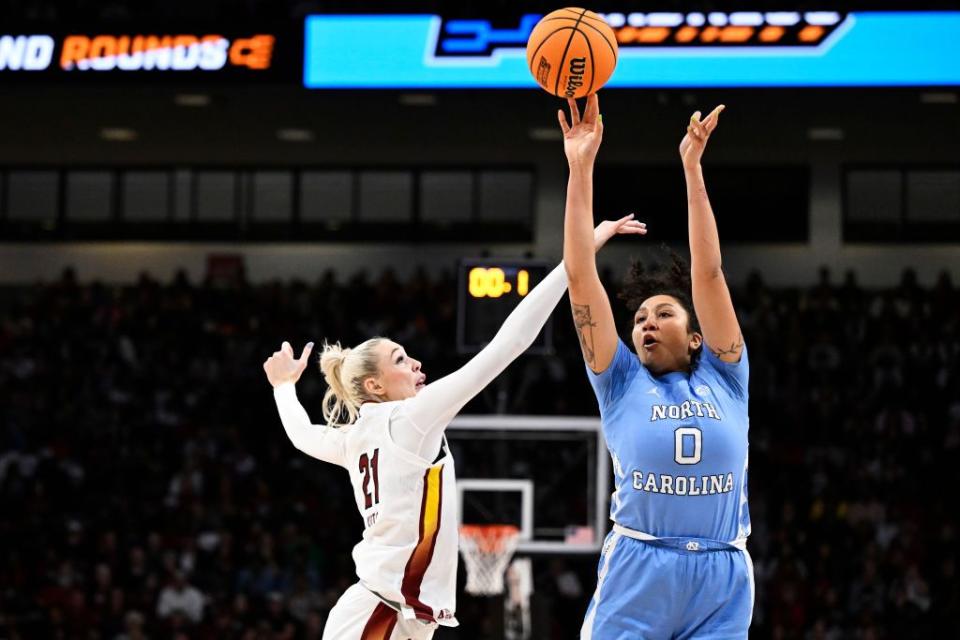
Players must maintain a certain GPA.
While GPA requirements vary by school, student-athletes must maintain a solid GPA in order to remain eligible to play. NCAA rules also state that Division I players must earn at least six credit hours a semester to stay on the squad. Although players have five years of eligibility, this can be in jeopardy if they don't hit degree progress benchmarks. Second-year players must be at least 40% through their degree, third years at least 60%, and fourth years at least 80%.
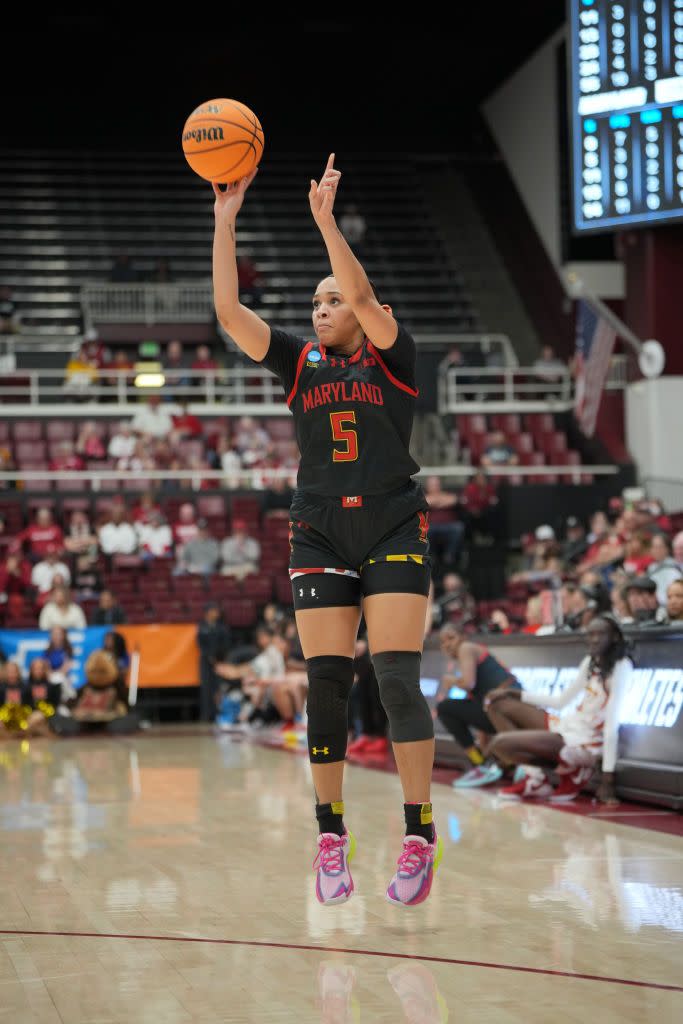
College athletes have media obligations too.
Ever wondered if players have a say in talking to the press? During the tournament, press conferences are conducted before and after every game. NCAA rules state: "The host media coordinator will have the authority to request any student-athlete to attend any press conference." In fact, every team must send their head coach and a minimum of two players to dish on the game. Prior to the National Championship, teams must make all five of their starters available to the media.
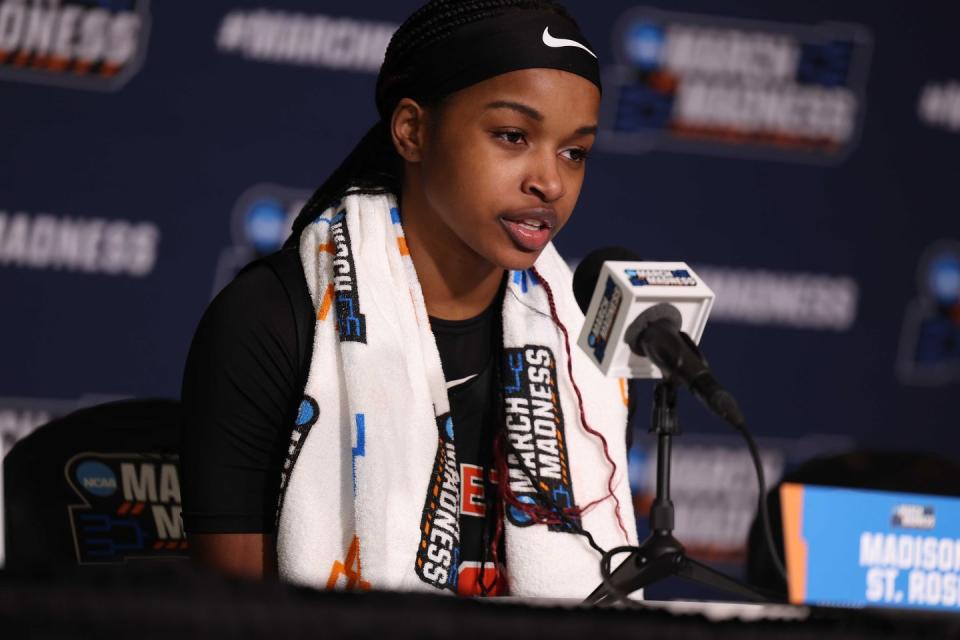
Coaches can't contact prospective players until after their sophomore year.
NCAA Division 1 coaches can reach out after June 1 following an athlete's sophomore year of high school. But there's a catch: Recruits and coaches can communicate via phone if the athlete is the one initiating the contact. As a result, many talented players informally commit to their college of choice before their junior year.
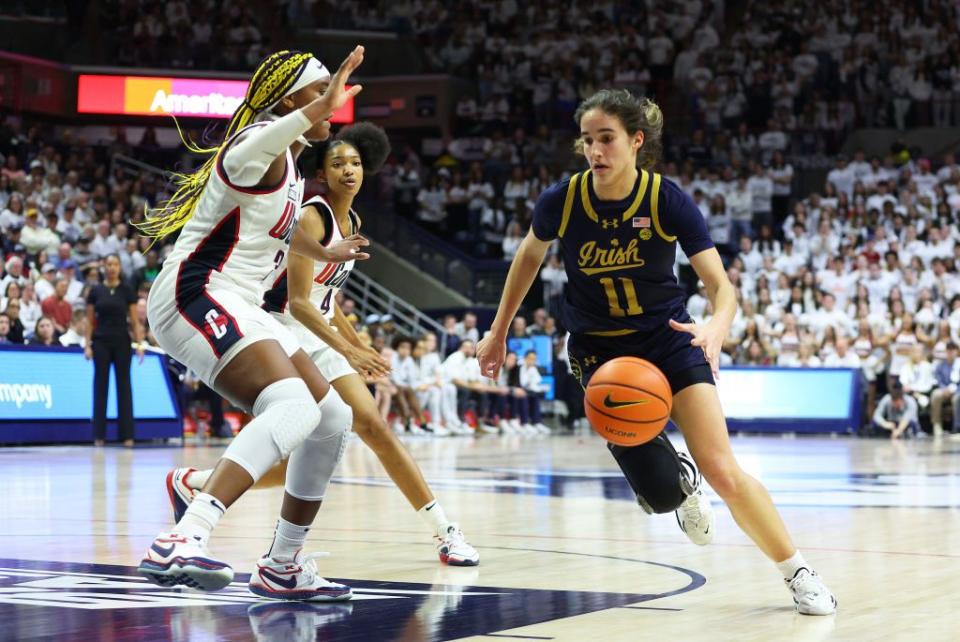
Transferring to a new school is possible, but there are parameters.
When players want to switch schools, they can enter the NCAA Transfer Portal. Some players, like LSU's Hailey Van Lith, can enter as a non-contact transfer, which meant Van Lith could reach out to schools she was interested in, but schools could not contact her. Other players use the portal to gauge other programs' interest in them.
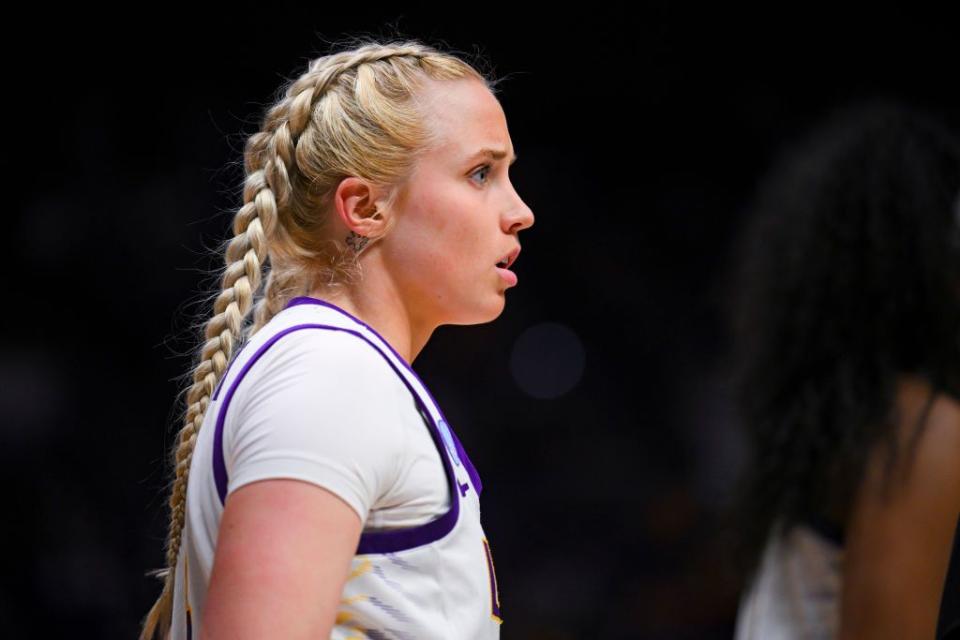
Women's games are played in quarters.
Avid college basketball fans probably know that men's games are divided into two 20-minute halves, while women's games are played in four 10-minute quarters. This change was implemented by the NCAA in 2015 because it was thought to "enhance the flow of the game."

Jersey number rules have changed.
Prior to 2023, the highest number a college basketball player could sport was 55, spotted here on Iowa State's Audi Crooks. Why? It made it easier for officials to use hand signs to signal fouls. In 2023, the NCAA Men's and Women's Basketball Rules Committee proposed a rule change that allows players to now wear any number between 0 and 99, bringing the college game up to speed with professional leagues.
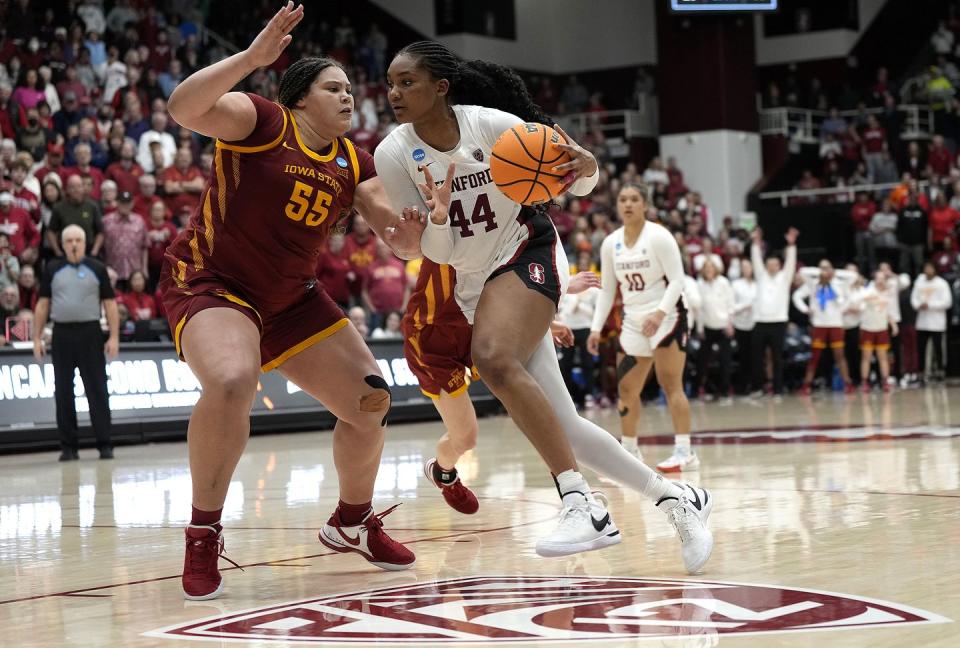
Players can earn money through endorsements...
In 2021, the NCAA made a landmark decision to allow student-athletes to monetize their name, image, and likeness (NIL). As a result, Haley and Hanna Cavinder, twin basketball players, have earned nearly $2 million—and they credit NIL with allowing them to plan for their post-basketball futures. "We wanted to create a brand and a successful business, and honestly, that's all due to NIL and the connections and relationships that we built," Hanna told Fox Business.

...but there are pretty complex NIL rules.
Although NIL laws vary by state, most policies prohibit athletes from endorsing alcohol, drugs, or gambling-related products. According to Mit Winter, an NIL attorney, the rules also state that athletes must provide something—a social media post, an appearance—in return for payment. Winter also told U.S. News & World Report that athletes cannot enter deals with their own school, cannot agree to commit to a specific school in the terms of the deal, or accept a deal that's tied to their performance on the court.
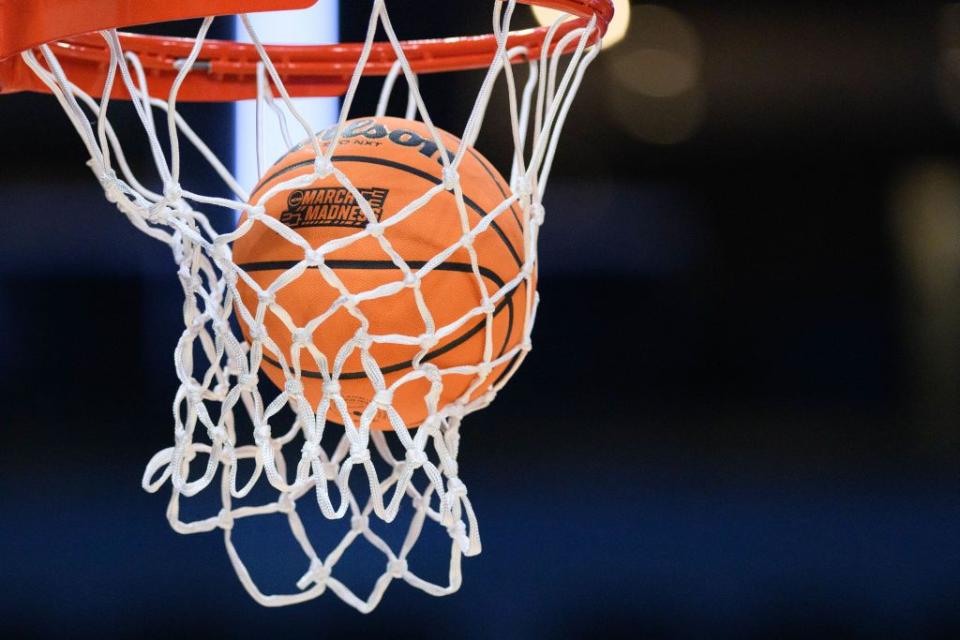
There aren't any makeup restrictions, but some players limit themselves.
While this isn't a rule by any means, some players say they prep for their games with a quick makeup routine. Stanford's Cameron Brink told The New York Times that she wears eyebrow gel, concealer, mascara, and sometimes blush on the court while playing—but she draws the line at in-game touch-ups. "I look like this when I was playing, I'm going to live with it," she said.
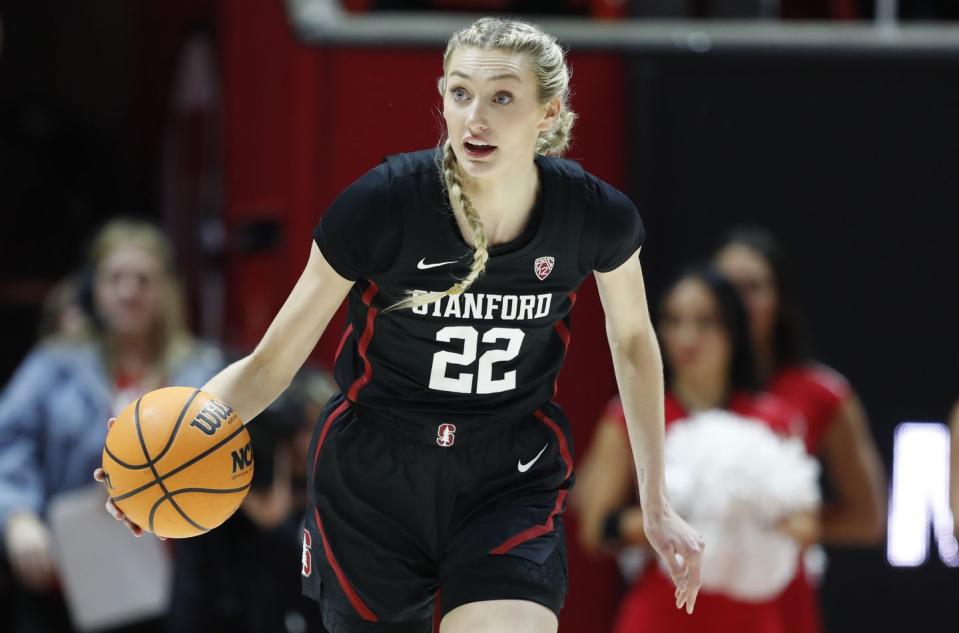
There's time for fun.
While most basketball players have to keep to a pretty strict schedule to balance school and the game, they still get the chance to act like college kids. Between locker room antics and spending downtime at on-site lounges—complete with massage chairs and video games—student-athletes get rewarded for their efforts on the court. And it goes without saying that we'd sincerely appreciate an invite to those incredible post-game celebrations.
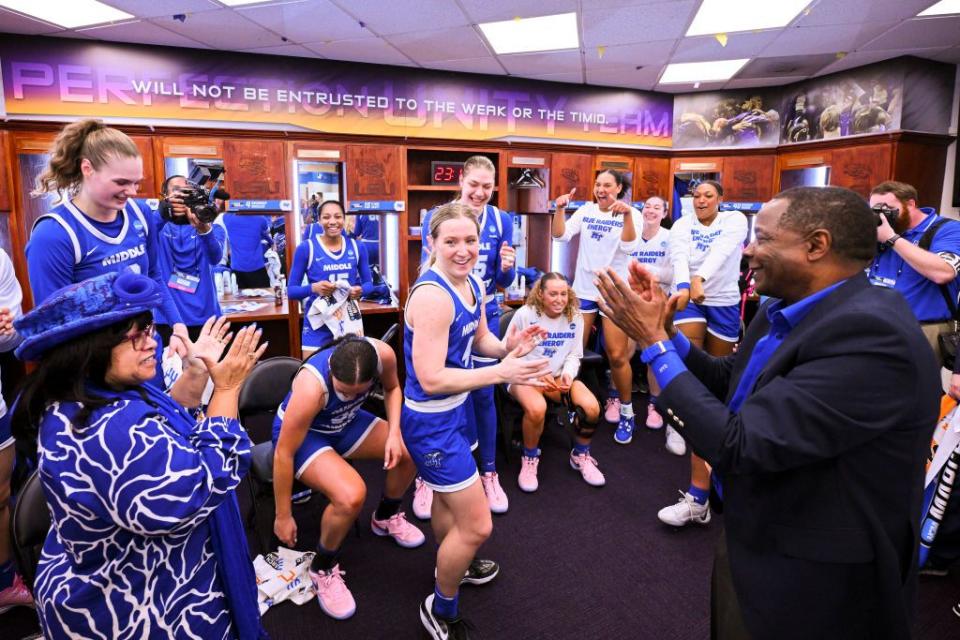
Teams can travel in style.
While many NCAA women's basketball teams take buses or commercial flights to their destinations, others—like the Gonzaga Bulldogs—travel via privately chartered planes. Onboard, flight attendants dole out unlimited snacks and drinks. According to the Spokesman-Review, most members of this women's team spend flights working on homework.
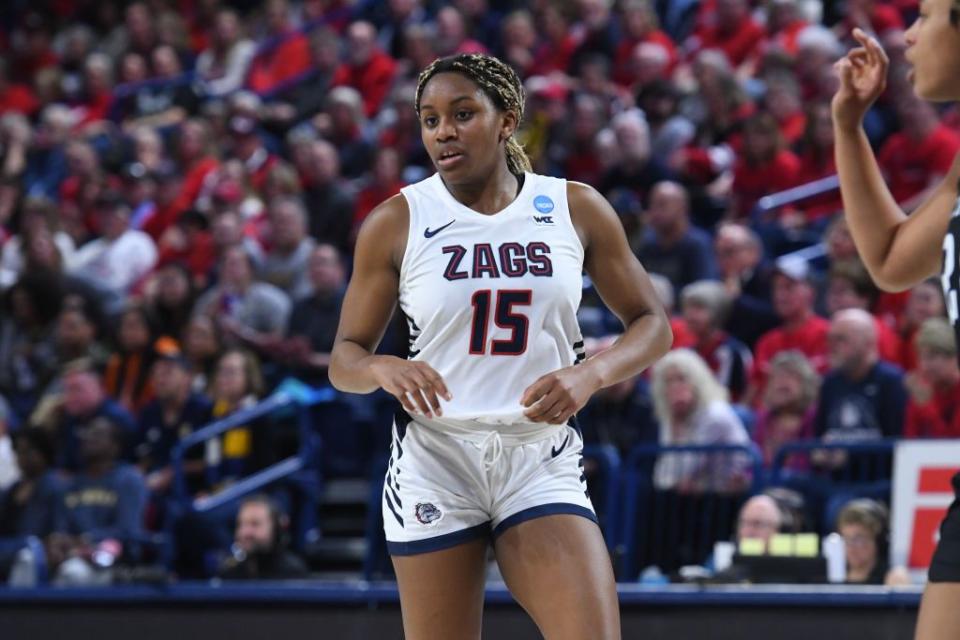
The Final Four is a family affair.
Well, sort of! In 2015, the NCAA announced a program that gives families up to $3,000 worth of travel, hotel, and meal expenses in order to watch their child compete in the Final Four. Should the team make it to the championship, the number gets bumped up to $4,000. "Championship experiences like the Final Four create memories of a lifetime for student-athletes, and we want to make sure their families are there to support and celebrate with them," said former NCAA President Mark Emmert.
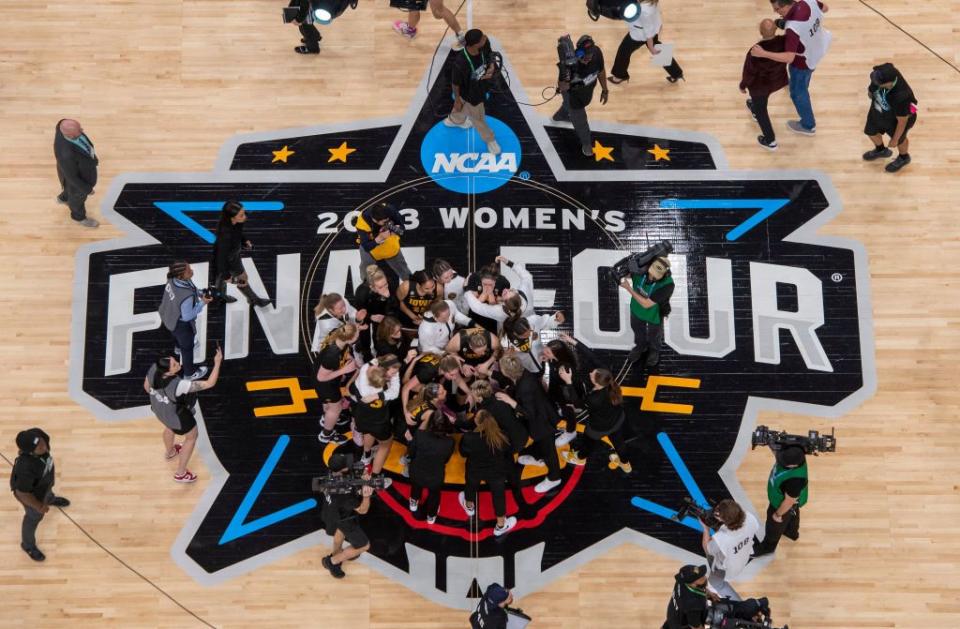
Women's basketball is more popular than ever.
And it's thanks to superstar players like Iowa's Caitlin Clark (is there a record she's hasn't broken yet?), LSU's Angel Reese, and UConn's Paige Bueckers. "People are so much more aware and engaged. 'Hey, let me go see what the hoopla is,'" UConn's head coach Geno Auriemma told Reuters. "The product has been great, great performances by a lot of terrific players." As a result, attendance is at an all-time high, and ratings are too. Makes all of the rules feel worth it, right?
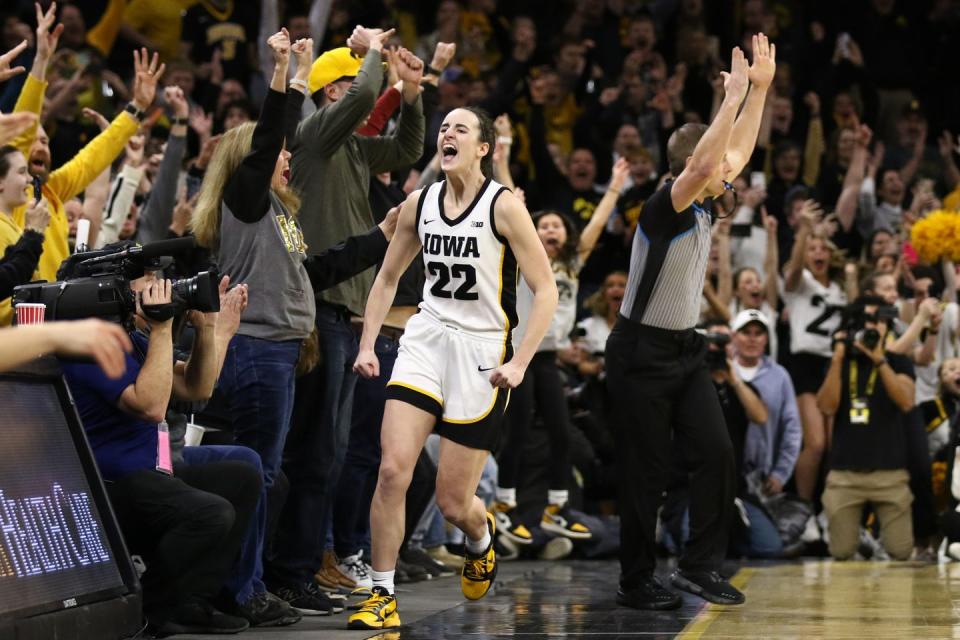
You Might Also Like

